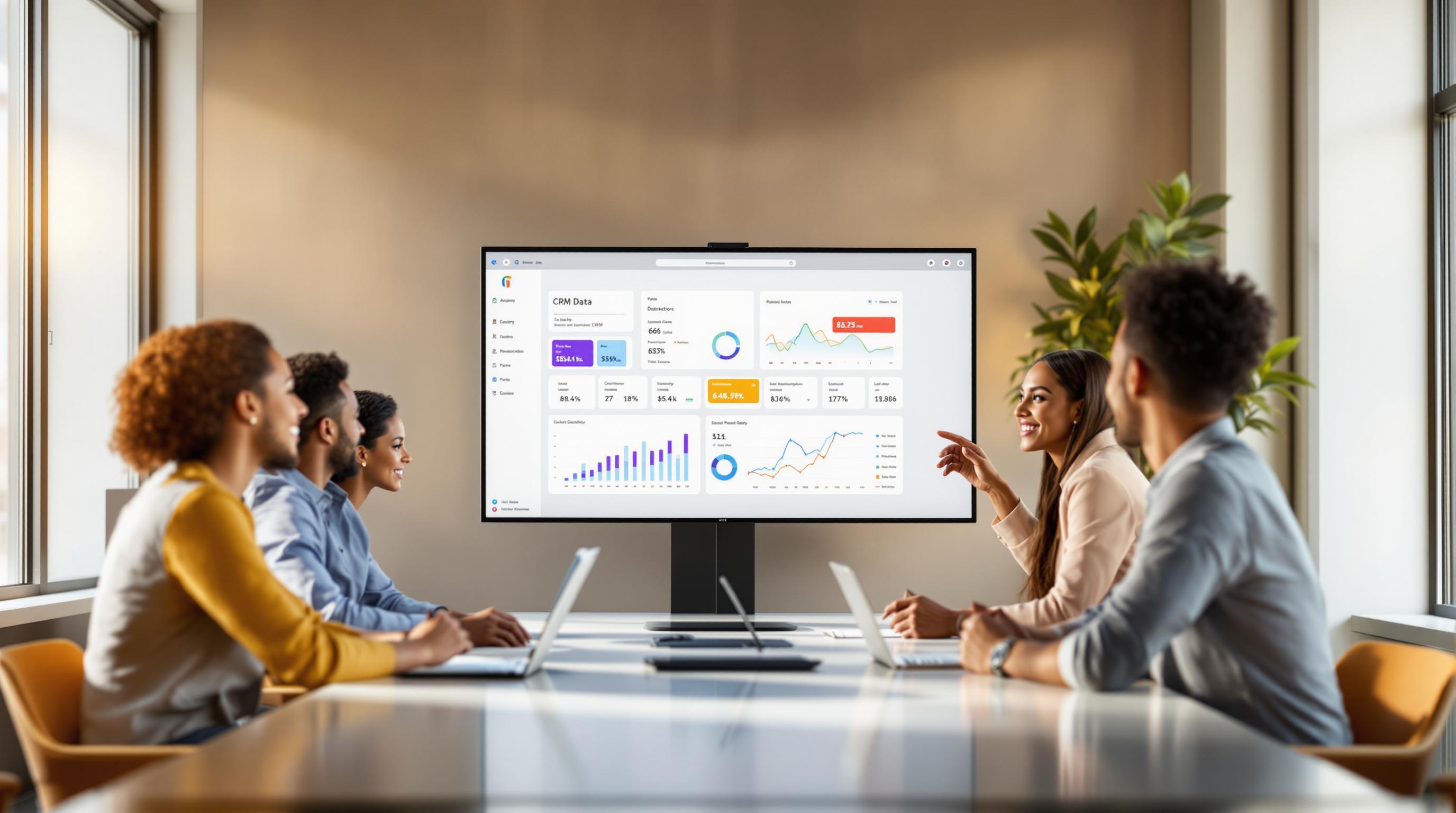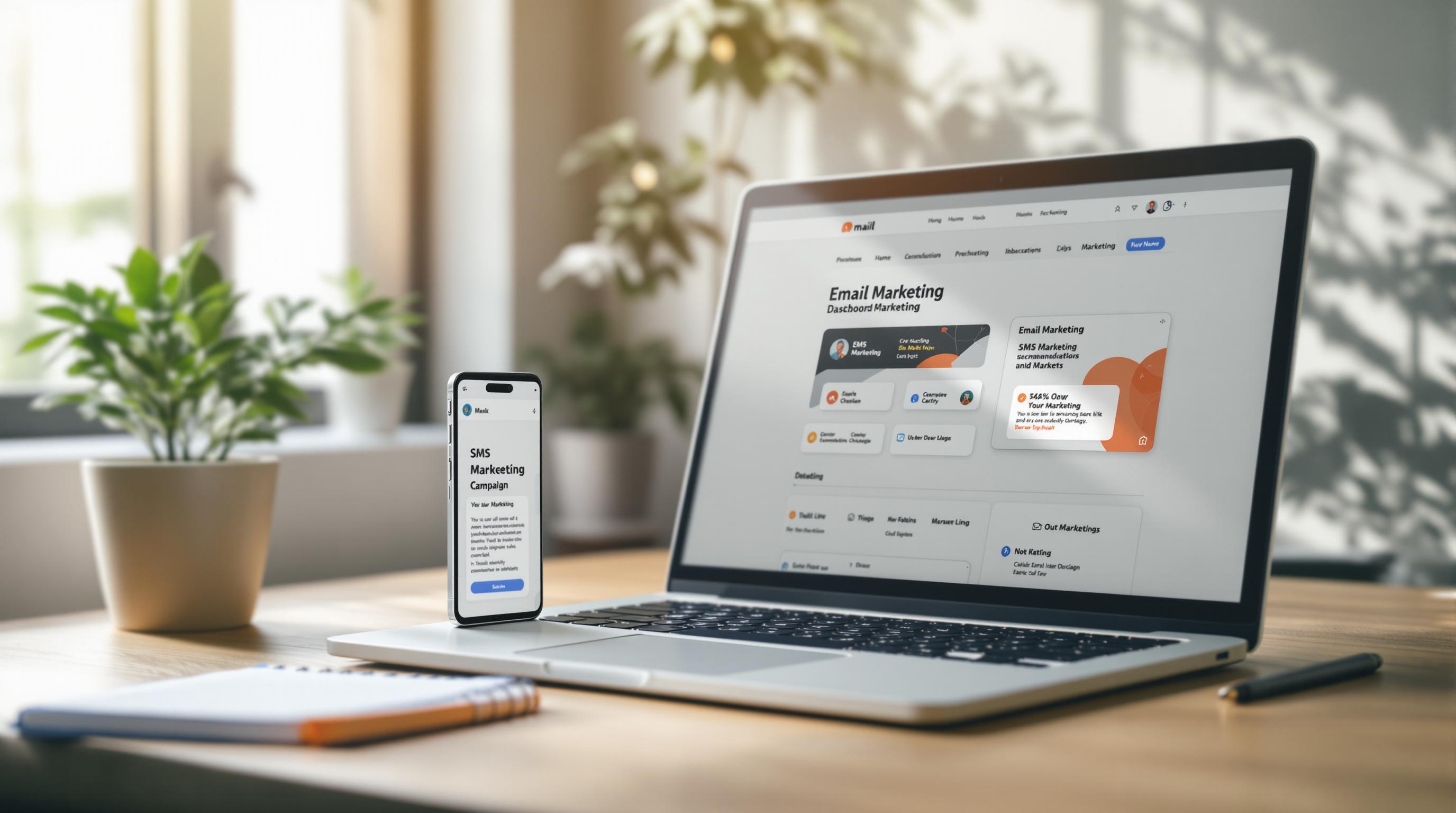Want to onboard clients smoothly and build strong relationships from day one? This checklist is your go-to guide. It covers everything you need to ensure a seamless transition from sales to service delivery. Here's what you'll tackle:
- Assign a dedicated account manager for clear communication.
- Gather client info with a detailed questionnaire.
- Centralize and organize data using a CRM.
- Align expectations in a kick-off meeting.
- Create a project timeline with milestones and KPIs.
Bonus Tips: Use automation tools to streamline repetitive tasks, set up clear communication channels, and provide self-service resources to empower clients. This process saves time, reduces churn, and keeps clients engaged.
Ready to improve your client onboarding? Let’s dive in.
How To Fully Automate Client Onboarding With HighLevel

Step-by-Step Client Onboarding Checklist
Here’s a breakdown of the steps you can follow to create a smooth onboarding process that builds trust and lays the groundwork for a strong client relationship.
1. Assign a Dedicated Account Manager
Start by assigning one person to guide the client through the onboarding process. This account manager will be the client’s main contact, ensuring consistent communication and accountability. Their responsibilities should include:
- Reviewing pre-sales details and tracking the onboarding progress
- Preparing a welcome package with an onboarding guide, contact details, and an overview of your agency
2. Send a Client Questionnaire
Develop a detailed questionnaire to gather important information about your client’s business. This helps you better understand their needs and goals. Key areas to cover include:
| Category | Key Information to Collect |
|---|---|
| Company Info | Company history, mission, and values |
| Goals | Short-term and long-term objectives |
| Target Audience | Demographics and challenges of their audience |
| Past Marketing | Previous campaigns, results, and key takeaways |
| Competition | Main competitors and their market positioning |
3. Organize Client Data
Once you’ve collected all the necessary information, centralize it in a CRM or similar tool for easy access and collaboration. Make sure to include:
- Contact details for key stakeholders
- Communication preferences
- Budget and billing details
- Key dates and project milestones
4. Hold a Kick-Off Meeting
Schedule a meeting to align on expectations and define project parameters. As SPP highlights:
"Effective onboarding involves setting clear goals and expectations, assigning tasks to specific team members, and establishing regular communication with clients" [2].
During the meeting:
- Go over the client’s questionnaire responses to clarify goals
- Introduce your team and explain their roles
- Confirm communication protocols and project workflows
5. Create a Project Timeline
Develop a roadmap that outlines:
- Major milestones and deliverables with deadlines
- KPIs, review processes, and performance metrics
- A schedule for regular check-ins
A well-defined timeline ensures clarity for everyone involved. At this stage, consider using automation tools to simplify and speed up the onboarding process.
Tips to Improve Onboarding
Making your client onboarding process smoother is essential for building trust and ensuring project success. Here are some practical strategies to help your agency onboard clients more efficiently.
Use Automation Tools to Simplify Tasks
Automation tools like HighLevel can help reduce manual work and keep things running smoothly. Here’s how it can help:
- Smart Scheduling: Automatically set up kick-off meetings and follow-ups without endless email chains.
- Administrative Tasks: Trigger contracts, welcome packets, questionnaires, and invoices to send automatically.
- Calendar Integration: Sync schedules seamlessly for hassle-free meeting coordination.
Establish Clear Communication Channels
Setting up clear communication guidelines from the very beginning helps prevent misunderstandings and boosts client confidence. Here’s a simple framework you can follow:
| Communication Type | Purpose | Frequency |
|---|---|---|
| Email Updates | Share project status and updates | Weekly |
| Video Calls | Discuss strategies and milestones | Bi-weekly |
| Project Management Tool | Track tasks and deliverables | Daily |
| Emergency Contact | Handle urgent, time-sensitive issues | As needed |
Provide Self-Service Resources
Giving clients access to helpful resources can reduce their reliance on support and improve their experience. Consider offering:
- Knowledge Base: A detailed collection of FAQs and guides to address common concerns.
- Video Tutorials: Quick, easy-to-follow videos to help clients navigate platforms or tools.
- Client Dashboard: Real-time updates on project progress, reports, and metrics through HighLevel’s dashboard.
sbb-itb-f031672
How HighLevel Can Simplify Onboarding
HighLevel makes client onboarding easier for marketing agencies by bringing together essential tools in one platform. This setup boosts efficiency and ensures a polished, seamless process.
Manage Client Information with CRM Tools
HighLevel's CRM keeps all client data in one place. Agencies can track interactions, review past records, and create detailed engagement reports without juggling multiple systems. The platform also offers advanced reporting tools that provide insights across communication channels, helping agencies make smarter decisions when managing clients.
Automate Repetitive Onboarding Tasks
Repetitive tasks like sending welcome emails, scheduling meetings, and gathering documents can be automated through HighLevel, saving time and ensuring a smooth client experience. Here’s how:
| Task Type | Automation Feature | Benefit |
|---|---|---|
| Client Communication | Automated emails and forms | Delivers a consistent experience |
| Meeting Scheduling | Calendar integration | Avoids scheduling conflicts |
| Document Collection | Automated form submissions | Speeds up information gathering |
| Progress Updates | Automated status reports | Keeps clients informed |
Streamline Payments with Automated Billing
HighLevel’s billing tools handle invoicing, recurring payments, and payment tracking, reducing manual work and ensuring payments are processed on time. Agencies can also use white-labeling to align the platform with their branding, creating a cohesive and professional experience for clients.
Conclusion
Key Takeaways
A strong client onboarding process lays the groundwork for productive agency-client relationships. To make this happen, focus on blending structured systems with a personal touch:
- Assign an account manager to ensure smooth communication and accountability.
- Leverage automation tools to handle repetitive tasks and save time.
- Keep communication clear to foster trust and transparency.
- Set defined timelines to align expectations and monitor progress.
These steps will help create an efficient and client-focused onboarding experience.
Next Steps
To refine your onboarding process, consider these actions:
- Assess your current workflow to pinpoint areas that need improvement.
- Use HighLevel's automation tools to simplify client management and communication.
- Create standardized materials that can be tailored to each client's needs.
The goal is to balance efficiency through automation with meaningful, personalized interactions. Regularly review your process using client feedback and performance data to ensure continuous improvement. This approach will help your agency build stronger, more lasting client relationships [1][2].
FAQs
Here are answers to some common questions about client onboarding processes and how they can help your agency work more effectively.
What is a client onboarding checklist?
A client onboarding checklist is a tool that helps marketing agencies bring new clients on board smoothly. It ensures that important information is collected, expectations are clear, and communication is organized. This approach keeps things consistent and maintains high standards across all client relationships.
What is the agency client onboarding process?
The onboarding process involves several steps, such as assigning an account manager, gathering client data, holding kick-off meetings, and setting up workflows. These stages create a structured experience for new clients:
| Phase | Key Activities | Purpose |
|---|---|---|
| Initial Setup | Assigning an account manager, sending a questionnaire | Establish a main point of contact and gather basic details |
| Data Collection | Adding client info to CRM, documenting goals | Centralize client information and align on objectives |
| Strategy Alignment | Holding a kick-off meeting, creating a project timeline | Set expectations and define what success looks like |
| Implementation | Setting up communication channels, starting initial tasks | Begin project work and establish a working process |
What makes a good client onboarding process?
A strong onboarding process lays the groundwork for trust and professionalism by focusing on clear communication and streamlined operations. Key elements include:
- Clear expectations: Ensure both sides understand deliverables, timelines, and communication methods.
- Defined roles: Clarify responsibilities for your team and the client’s stakeholders.
- Efficient workflows: Use automation tools to handle repetitive tasks while keeping interactions personal.
- Professional communication: Organized systems and clear updates show your agency is reliable.
The effectiveness of your onboarding process can often be seen in client satisfaction and the strength of the relationships it builds. A well-structured process not only helps clients see the value of your services but also gives them confidence in your ability to deliver results.



